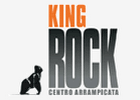Le date si riferiscono al giorno di inserimento delle notizie.
Alex Megos su The Story of Two Worlds 8C
(31/12/2020)
(31/12/2020)
Alex Megos ripete la famosa linea di "The Story of Two Worlds", aperto nel 2005 a Cresciano da Dave Graham, il quale allora lo propose come nuovo standard di riferimento per il grado di 8C, in contrasto alla tendenza di quel periodo alla sopravvalutazione dei boulders a fini mediatici.
Ironicamente lo stesso blocco richiama ancora oggi a riflessioni sulle difficoltà nel bouldering che, al di là dei numeri, possono rivelarsi anche molto differenti in base al metodo utilizzato.
Alex pone l'accento sull'importanza del 'COME' (HOW) un passaggio viene risolto, evidenziando che non sia possibile mettere sullo stesso piano salite con metodi completamente differenti. Ad esempio svariate ripetizioni sono state effettuate con l'agevolazione dell'uso di una ginocchiera (knee pad), anche se la prima salita era stata effettuata senza, ma spesso non mettendo in discussione il fatto di aver risolto un blocco con una difficoltà diversa da quella proposta in origine.
Già sui primi movimenti della sequenza si sono viste varie versioni, a partire da quella iniziale di Dave Graham (181 cm) il quale utilizza prese di partenza non raggiungibili da climbers di bassa statura con una corretta partenza da seduti. Nel 2010 Dai Koyamada (165 cm) userà infatti una nuova sequenza bassa che gli permetterà di partire da una posizione di corretto sit-start, rendendo così più impegnativo il blocco, con la proposta di valutazione a 8C+.
Ecco le sue riflessioni su Instagram:
"A short but great trip to Ticino with @yannick_flohe and @hungrylatvian came to an end. After doing Dreamtime, I set my sights on the famous @dave_graham_ test piece "The Story of Two Worlds" on the other side of the boulder. There are various videos online from lots of different climbers, all theoretically climbing the same boulder and claiming the same grade- 8C. It seems like the climbing community is not differentiating at all and rarely mentioning HOW things are climbed. This issue was recently brought to my attention after the discussion about @yannick_flohe 's "dab" on Dreamtime. Climbing and especially bouldering is all about the HOW. Even more surprising though was the fact that people don't really seem to care too much about the HOW, although it is supposed to be the most important part of climbing/bouldering in some people's eyes.
After watching all those videos of "The Story of two Worlds", I noticed there are huge differences. Some use a kneepad, although the FA was done without. Most sit down to start, some don't. One climber (@dai_koyamada) started lower than all the others and didn't use a kneepad. And in the end they all climbed the same 8C? That thought seems very alienating to me.
Yes, climbing is a funny sport and it's not only about getting to the top. It's HOW you get to the top. I would wish for more awareness within the climbing community, that there are differences in ethics, styles and grades. We, as climbers, should be more open about it and communicate HOW we have done certain climbs. Ticking a grade shouldn't be the most important part of climbing. Climbing is so much more than that.
There are differences in HOW things get climbed and we should acknowledge those.
Glad I managed an ascent of "The Story of two Worlds" on my last day. I valued climbing it without a kneepad and I did (barely). I'd say 8C seems about right. A little too much fridge hugging for my taste though ?. "
Il video sul suo Canale YouTube, nel quale, assieme ad Yannick Flohé, lo vediamo impegnato nelle salite dei seguenti boulders:
"La Pelle Direct" 8A+
"La Nave va" 7C+
"Dreamtime" 8C
"The Dagger" 8B/+
"The Story of Two Worlds" 8C
Ironicamente lo stesso blocco richiama ancora oggi a riflessioni sulle difficoltà nel bouldering che, al di là dei numeri, possono rivelarsi anche molto differenti in base al metodo utilizzato.
Alex pone l'accento sull'importanza del 'COME' (HOW) un passaggio viene risolto, evidenziando che non sia possibile mettere sullo stesso piano salite con metodi completamente differenti. Ad esempio svariate ripetizioni sono state effettuate con l'agevolazione dell'uso di una ginocchiera (knee pad), anche se la prima salita era stata effettuata senza, ma spesso non mettendo in discussione il fatto di aver risolto un blocco con una difficoltà diversa da quella proposta in origine.
Già sui primi movimenti della sequenza si sono viste varie versioni, a partire da quella iniziale di Dave Graham (181 cm) il quale utilizza prese di partenza non raggiungibili da climbers di bassa statura con una corretta partenza da seduti. Nel 2010 Dai Koyamada (165 cm) userà infatti una nuova sequenza bassa che gli permetterà di partire da una posizione di corretto sit-start, rendendo così più impegnativo il blocco, con la proposta di valutazione a 8C+.
Ecco le sue riflessioni su Instagram:
"A short but great trip to Ticino with @yannick_flohe and @hungrylatvian came to an end. After doing Dreamtime, I set my sights on the famous @dave_graham_ test piece "The Story of Two Worlds" on the other side of the boulder. There are various videos online from lots of different climbers, all theoretically climbing the same boulder and claiming the same grade- 8C. It seems like the climbing community is not differentiating at all and rarely mentioning HOW things are climbed. This issue was recently brought to my attention after the discussion about @yannick_flohe 's "dab" on Dreamtime. Climbing and especially bouldering is all about the HOW. Even more surprising though was the fact that people don't really seem to care too much about the HOW, although it is supposed to be the most important part of climbing/bouldering in some people's eyes.
After watching all those videos of "The Story of two Worlds", I noticed there are huge differences. Some use a kneepad, although the FA was done without. Most sit down to start, some don't. One climber (@dai_koyamada) started lower than all the others and didn't use a kneepad. And in the end they all climbed the same 8C? That thought seems very alienating to me.
Yes, climbing is a funny sport and it's not only about getting to the top. It's HOW you get to the top. I would wish for more awareness within the climbing community, that there are differences in ethics, styles and grades. We, as climbers, should be more open about it and communicate HOW we have done certain climbs. Ticking a grade shouldn't be the most important part of climbing. Climbing is so much more than that.
There are differences in HOW things get climbed and we should acknowledge those.
Glad I managed an ascent of "The Story of two Worlds" on my last day. I valued climbing it without a kneepad and I did (barely). I'd say 8C seems about right. A little too much fridge hugging for my taste though ?. "
Il video sul suo Canale YouTube, nel quale, assieme ad Yannick Flohé, lo vediamo impegnato nelle salite dei seguenti boulders:
"La Pelle Direct" 8A+
"La Nave va" 7C+
"Dreamtime" 8C
"The Dagger" 8B/+
"The Story of Two Worlds" 8C









